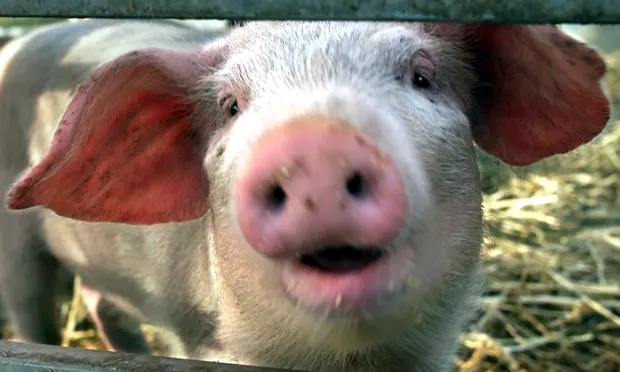Starting off as a young pig farmer- What you need to know
Many Kenyan businesspeople will affirm how tough it is to start and grow a business from scratch. It often comes with bottlenecks in financing and finding a market among other pertinent issues.
This article gives you handy nuggets of knowledge in growing a pig farming business, as explained by Mr. Brian Mwenda. Brian, 25, is a young pig farmer in Timau who shared his story in the following 10 points;
1. Grit, a never-giving-up attitude
As a campus student, Brian had struggled to try his hand at several businesses, including in event advertising. All those ventures had failed, deflating his drive and hopes to be successful.
Brian, however, had the strength to carry on. “Even if I had failed severally, I had gained crucial insights on how to start and grow a business,” he says.
2. Taking your chances
Sometime last year while he browsed Twitter, Brian saw an opportunity. It was a business plan competition organized by the Government of Kenya and the World Bank.
This partnership was to fund youth-owned businesses, both start-ups, and existing ones. Brian decided to participate.
3. The smart Pig farming idea
With his hard-earned lessons still vivid, Brian conceptualized his pig farming idea on the following points;
-
- A business that was going to have low risk.
- A business with a ready market and high returns.
- One that could create more employment and be scalable.
- A business that had to be anchored on the government’s big 4 agenda (food security).
- That was how his pig farming business plan came about.
4. Starting the pig farming business
Given the expertise, wisdom, and calculations that went into it, Brian’s business plan was among the winning documents (750 out of 11,000 submitted business plans!).
He was among the youngest chaps who secured funding. And yes, his project was officially underway.
5. Pig farming requirements.
After the well calculated albeit miraculous funding swipe, Brian readied himself to set up his farm. He did the following;
-
- Erected pig structures
- Sourced for labor
- Looked for the first batch of pigs to start with.
- Stocked Feeds
6. Pig farming structures
Putting up the structures, Brian was keen on sustainability. His newly constructed pigsties were anchored on the present and future plans of the farm. Brian is looking at a possible expansion of his pig farm.
7. Pig farming practices
Pig farming practices should be solidly guided by research. To begin with, the animals you acquire should be the best ones you can find.
To that end, intense effort and bouts of time go into researching the history of each sow or boar you bring in.
“So I started the business, with so much research, I went looking for pigs from Timau to as far as Murang’a,” Brian says.
8. Pig farming costs
The costs usually depend on the scale of the business you operate. Brian says with the funding he acquired, he invested approximately 900,000 Kenya Shillings in this venture.
“Quality of Feeds is key. It is the highest recurring expenditure you will incur as a pig farmer, and so capital is key.” he says.
9. Pig farming advantages
Regardless of the amount of money you put in, you need not worry about recouping your investments. This is because of the following reasons;
-
- Pigs are known for their high feed conversion. Pigs yield more weight per given unit of feed as compared to many other animals.
- Because of the high feed conversion, pigs mature really quickly, giving you a chance to cash in on your livestock within 6 to 8 months.
- Pigs are also prolific animals. A sow can give birth to 9-15 piglets, 2-3 times a year.
- Pork has a high demand in Kenya, with the pig farming industry worth over 3.5 billion Kenya Shillings.
This is precisely why Brian spends the highest in feeds. According to him, some of the aspects of this farming cannot be compromised. “There is no shortcut in this business, he insists.”
10. Pig farm management
Pigs require total attention 24 hours 7 days a week. To ensure his precious animals’ needs are met, Brian enlisted the services of a farm manager.
Despite the fast-paced everyday proceedings in the capital, he makes regular trips to assess and stay abreast of the happenings.
Brian has also leveraged social media, video call,s and other technological solutions to stay up to date on his business, kilometers away.
Brian’s story mirrors a class of meticulous, young Kenyan entrepreneurs who are willing to go out of their way to realize their goals. It is incumbent on the government to continuously streamline the overall business environment and support youth-owned businesses.




















